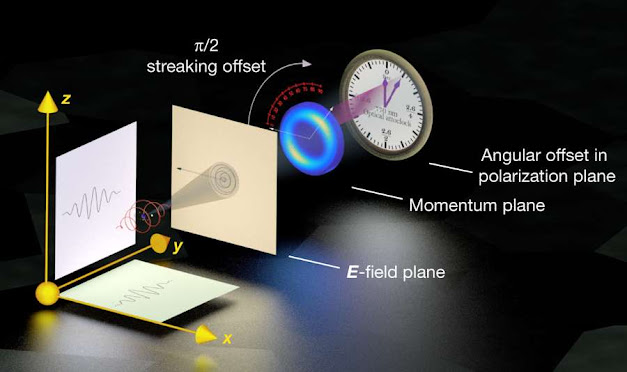Among the strange features of quantum mechanics is the phenomenon known as quantum tunneling, where a subatomic particle overcomes a barrier that would be impassable in other sorts of physics. Generations of physics students have been taught this phenomenon with analogies like objects passing through solid walls, but the time this process takes has always been a mystery. A new study has set an upper bound on the time it takes, one so short the process may be instantaneous, in which case these particles would be exceeding the speed of light.
Tunneling certainly happens so quickly it is hard to measure. Recent efforts have used heavier atoms, necessitating indirect measurements. Dr Igor Litvinyuk of Griffith University told IFLScience the Australian Attosecond Science Facility is the only place in the world with all three types of equipment required to measure the time it takes electrons to tunnel from the grip of hydrogen atoms.
Litvinyuk helped put that combination to use, reporting in Nature that the process takes no more than 1.8 attoseconds. An attosecond is 10-18 or a billionth of a billionth of a second. “It’s hard to appreciate how short that is, but it takes an electron about a hundred attoseconds to orbit a nucleus in an atom,” said co-author Professor Robert Sang in a statement.
Tunneling time sets a limit on how fast transistors could theoretically switch, so having such a short time makes ultra-fast computers more realistic.
Moreover, Litvinyuk and Sang's value is a ceiling, and they are open to the possibility the tunneling is instantaneous. If so, the electron would be traveling a distance in zero time, exceeding the speed of light.
Litvinyuk told IFLScience the team are not certain of such a remarkable claim, but he “cannot see why this is impossible.” He added that “this is quantum physics,” a phrase that explains almost any oddity. “This doesn't necessarily mean the superluminous speeds could be used to carry information.”
Even if Litvinyuk's work doesn't put a major kink in the theory of relativity, it could still teach us much about quantum physics. Some subatomic processes involve a sequence of steps, tunneling included. “We know that the test atom gives us zero delay, so all other delays can be calibrated in respect to that,” Litvinyuk said.
To make the finding, Litvinyuk hit hydrogen atoms in rotating electric fields with immensely short but powerful bursts of light. These stimulated electron tunneling, with the electrons' escape angle dependent on tunneling time. The electrons' directions were indistinguishable from those they would take if tunneling was instantaneous.
The light bursts carried 30 Gigawatts of energy, more than the norm for Australia's entire electricity grid. Litvinyuk told IFLScience each pulse was produced by compressing much less energetic waves to produce an exceptionally brief coherent burst of radiation.
Schematic of the experiment, showing how the turning electric field creates a clock to measure the timing of the electron's escape. Sainadh et al./Nature.


